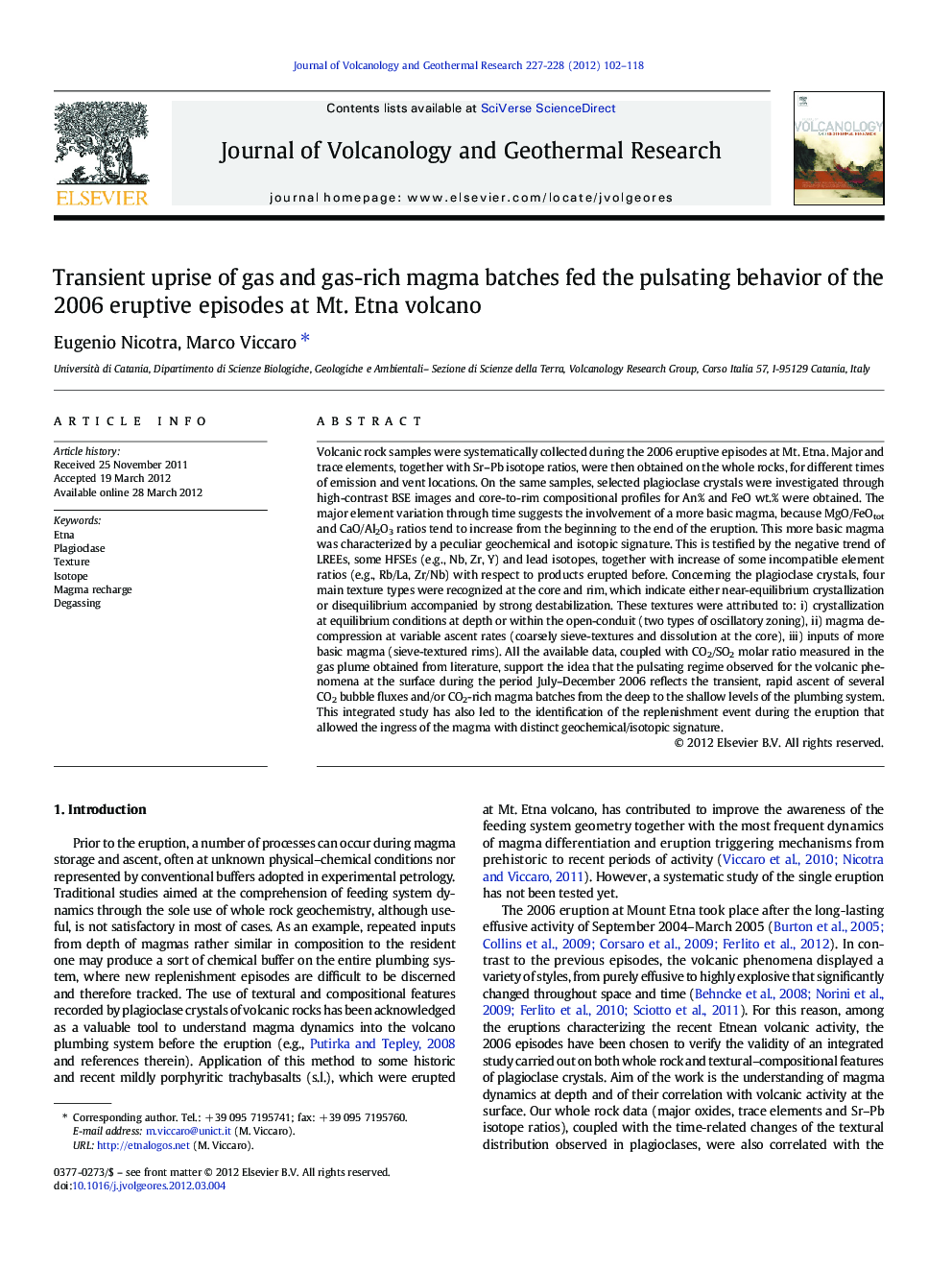| Article ID | Journal | Published Year | Pages | File Type |
|---|---|---|---|---|
| 4712715 | Journal of Volcanology and Geothermal Research | 2012 | 17 Pages |
Volcanic rock samples were systematically collected during the 2006 eruptive episodes at Mt. Etna. Major and trace elements, together with Sr–Pb isotope ratios, were then obtained on the whole rocks, for different times of emission and vent locations. On the same samples, selected plagioclase crystals were investigated through high-contrast BSE images and core-to-rim compositional profiles for An% and FeO wt.% were obtained. The major element variation through time suggests the involvement of a more basic magma, because MgO/FeOtot and CaO/Al2O3 ratios tend to increase from the beginning to the end of the eruption. This more basic magma was characterized by a peculiar geochemical and isotopic signature. This is testified by the negative trend of LREEs, some HFSEs (e.g., Nb, Zr, Y) and lead isotopes, together with increase of some incompatible element ratios (e.g., Rb/La, Zr/Nb) with respect to products erupted before. Concerning the plagioclase crystals, four main texture types were recognized at the core and rim, which indicate either near-equilibrium crystallization or disequilibrium accompanied by strong destabilization. These textures were attributed to: i) crystallization at equilibrium conditions at depth or within the open-conduit (two types of oscillatory zoning), ii) magma decompression at variable ascent rates (coarsely sieve-textures and dissolution at the core), iii) inputs of more basic magma (sieve-textured rims). All the available data, coupled with CO2/SO2 molar ratio measured in the gas plume obtained from literature, support the idea that the pulsating regime observed for the volcanic phenomena at the surface during the period July–December 2006 reflects the transient, rapid ascent of several CO2 bubble fluxes and/or CO2-rich magma batches from the deep to the shallow levels of the plumbing system. This integrated study has also led to the identification of the replenishment event during the eruption that allowed the ingress of the magma with distinct geochemical/isotopic signature.
► The 2006 Etna eruption was investigated through a multidisciplinary study. ► Time-related rock sampling led to a comprehensive view on the feeding dynamics. ► Plagioclases provide indications on magma ascent and crystallization dynamics. ► The ingress of a geochemically-distinct magma was tracked during the 2006 eruption. ► Pulsating eruptive behavior was due to CO2 fluxing and/or CO2-rich magma recharges.
